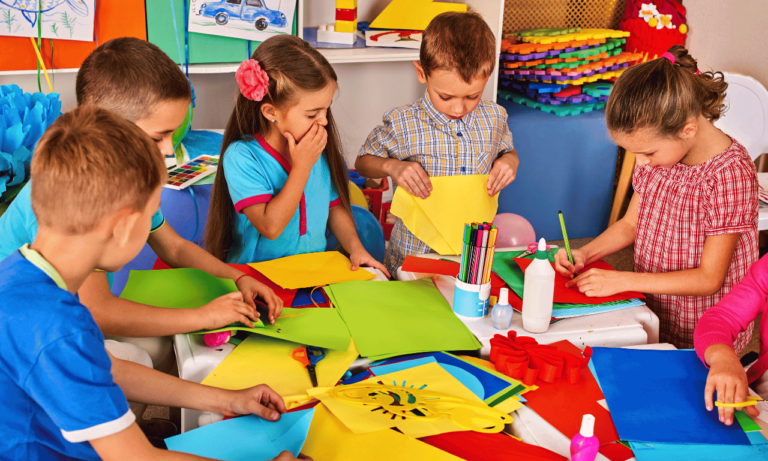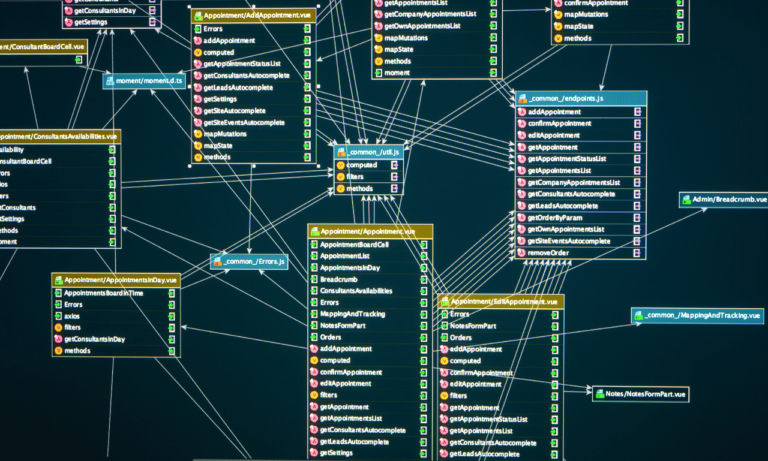Phone:
(+65)8319-0742
When it comes to nurturing the minds of the young, What is Scaffolding in Child Development is a question that unlocks a profound strategy used by caregivers and educators worldwide. Just as construction scaffolding enables builders to reach new heights, educational scaffolding provides a framework for children to ascend the developmental ladder. Child development pivots on the support that adults offer, guiding little learners as they explore and master new skills. This support is impeccably tailored, resembling a customized staircase that children climb at their own pace, ensuring that cognitive development is continuous and reinforced at every step.
Think of each new concept or skill as a level on a skyscraper. With educational scaffolding, we ensure children are not scaling a sheer wall but rather ascending a staircase built just for themâone that accounts for their individual needs and learning rhythms. It’s this thoughtful structuring of learning experiences that supports cognitive growth, allowing each child to flourish and reach their potential.
Key Takeaways
- Scaffolding in child development facilitates the acquisition of new skills.
- Tailored support helps children understand complex concepts incrementally.
- Parents and educators play a crucial role in nurturing cognitive growth.
- Educational scaffolding adapts to the unique learning styles of each child.
- Developmental milestones are achieved through structured learning experiences.
The Essence of Scaffolding in Supporting Cognitive Growth
At the heart of fostering a child’s abilities lies a delicate balance of guidance and independence, a balance that is perfectly struck through the methodology of Vygotsky scaffolding. This educational approach is not just a tool but a canvas for painting the broader strokes of cognitive growth. It carefully adjusts to the child’s present knowledge while introducing new challenges that beckon future learning triumphs and developmental milestones.
Providing learning support through scaffolding is much like providing a ladder for children to ascend the steps of understanding at their own pace. Just as scaffolding in the physical world allows builders to shape structures, in the educational realm, it allows minds to construct knowledge effectively and efficiently.
The Principles of Scaffolding and Its Role in Learning
Fundamental to the scaffolding process is the belief that every learner is uniqueâa concept deeply ingrained in the principles of scaffolding. Educational scaffolding aims to cater to each child’s particular strengths, using those as a basis for further academic and social flourishing. The aim is for the child to achieve cognitive growth, not as a serendipitous outcome but as a structured journey where developmental milestones are identified and strived for through tailored learning support.
Constructing Knowledge: The Analogy Between Building and Learning
Just as builders use scaffolds to create structures, educators use Vygotsky scaffolding to build a child’s understanding. It is a process of constructing knowledge layer upon layer, each one supporting the next. This architectural analog reminds us that the solidity of the foundation directly affects the height of the structure, paralleling the way robust early learning experiences underpin a lifetime of educational pursuit.
The intricacies of scaffolding are not merely in its implementation but also in its carefully measured withdrawal. As the child’s competence increases, the support is gradually reduced, giving way to independent learning and problem-solvingâkey indicators of a well-scaffolded approach to cognitive development.
What is Scaffolding in Child Development

The concept of educational scaffolding is a pivotal component in enhancing child development and cognitive growth. Scaffolding involves providing tailored support to children, enabling them to solve problems and complete tasks that would otherwise be out of reach. The effectiveness of this educational strategy hinges on its dynamic nature, accommodating and progressing in sync with the child’s expanding capabilities.
This method of learning and growth takes root in the Zone of Proximal Development, a theory introduced by psychologist Lev Vygotsky. It represents a space of potential development where children can accomplish complex tasks with the guidance of a more knowledgeable other, be it a teacher, parent, or a peer.
Cognitive growth is significantly accelerated when the child is assisted across this zone, combining what they can do independently with what they can achieve through strategic support. Below, an outline of educational scaffolding’s impact on child development underscores its transformative power.
- The initial assessment of the child’s current capabilities
- Identification of tasks within the child’s Zone of Proximal Development
- Gradual introduction of new challenges, aligned with the learner’s progression
- Ongoing adjustment of support levels to foster independence
The table below further elucidates the steps involved in educational scaffolding, providing a structured approach to bolster cognitive growth.
| Stage of Scaffolding | Actions by Educator | Child’s Developmental Response |
|---|---|---|
| Assessment | Observing and understanding the child’s current knowledge and skills | Gaining awareness of their learning starting point |
| Goal Setting | Defining achievable objectives within the ZPD | Building a sense of direction and purpose in learning |
| Support | Providing tools, resources, and guidance as needed | Developing confidence to engage with more complex tasks |
| Fading | Gradually withdrawing assistance, fostering independence | Learning to apply new skills autonomously |
| Reflection | Encouraging self-assessment and insight into the learning process | Integrating experiences and forming a basis for future learning endeavors |
In conclusion, educational scaffolding is a central approach to nurturing and accelerating cognitive growth and child development. By customizing the learning journey within the child’s Zone of Proximal Development, educators and caregivers can significantly amplify developmental outcomes.
Strategies for Effective Educational Scaffolding

Incorporating effective scaffolding techniques into education is not a one-size-fits-all approach; it requires an insightful understanding of individual learning styles to truly foster child development. By creating an environment that caters to the distinct ways in which children absorb and process information, educators can nurture an independent learning culture that prepares students to thrive academically and personally.
Adapting to Individual Learning Styles for Optimized Support
Children come with a myriad of learning styles, from visual and auditory to kinesthetic. Recognizing these differences is pivotal in scaffolding. For instance, visual learners benefit from diagrams and charts, while auditory learners excel with oral instructions and discussions. Kinesthetic learners, on the other hand, need to move and touch to understand concepts. Tailoring approaches to these styles can significantly enhance learning effectiveness.
Fostering Independent Learning Through Guided Discovery
Guided discovery is a pivotal component of scaffolding that encourages students to ask questions, explore, and make connections independently. This method helps them develop critical thinking skills and a love for learning, pushing them beyond their current knowledge base and fostering a mindset geared towards growth and self-sufficiency.
Promoting Developmental Milestones with Targeted Interventions
Targeted interventions within the scaffolding framework are designed to address specific educational needs and to promote significant developmental milestones. Such interventions could be the strategic use of questioning, feedback, or collaborative work that resonate with the learner, driving their development further and cementing new knowledge.
- Ask open-ended questions to encourage critical thinking
- Provide hands-on activities to reinforce learned concepts
- Use collaborative learning to build social and cognitive skills
These interventions serve as cognitive stepping stones, ensuring each child is receiving the support and challenge they need to succeed.
Incorporating Vygotsky Scaffolding into Everyday Learning Scenarios

Applying the educational theory of Vygotsky scaffolding in everyday learning scenarios transforms the abstract into tangible lessons that foster cognitive development in children. To effectively integrate this approach, it’s crucial to engage with each child’s Zone of proximal development (ZPD) in practical settings. Tailoring learning experiences to meet children’s individual needs allows them to connect with new information through social interactions, which are instrumental in their ongoing child development.
The day-to-day application of Vygotskyâs principles can involve a variety of familiar activities, each aimed at building upon what the child already knows, and gently pushing them toward higher levels of understanding within their ZPD. Throughout these experiences, the role of the teacher or caregiver is essential in providing not just information, but emotional and social support as well.
Engaging with the Zone of Proximal Development in Real-World Settings
When educators engage children in their ZPD, they provide opportunities that are neither too easy nor too challenging. This delicate balance encourages the child to apply existing skills while reaching out to grasp new knowledge. Using real-life problems and scenarios enriches this dynamic, enabling children to form connections between their learning and the world around them.
Understanding the Significance of Social Interactions in Cognitive Development
The interplay between children and their social environment is a cornerstone of Vygotsky scaffolding. The presence of responsive adults and peers during playtime or structured learning activities contributes significantly to how children process information and build new cognitive pathways. These social interactions act as the scaffold upon which children can climb towards greater intellectual achievements.
| Activity | Focus Area | ZPD Engagement | Role of Social Interaction |
|---|---|---|---|
| Storytelling | Language Skills | Using new vocabulary in context | Discussion and questioning about the story |
| Puzzles | Problem-Solving | Applying logical sequencing | Collaborative solution-finding with peers or adults |
| Role-Playing | Social Understanding | Embracing diverse perspectives | Interaction in a group setting to navigate social roles |
| Science Experiments | Critical Thinking | Formulating hypotheses based on prior knowledge | Communication of ideas and results |
As depicted in the table above, teachers and caregivers can craft engaging experiences that tap into the ZPD, using play and exploration to facilitate child development. By incorporating Vygotsky scaffolding into daily interactions, the potential for meaningful cognitive development is substantially amplified, providing a structured yet flexible approach to learning.
Conclusion
Through the detailed exploration of educational scaffolding, its significance in child development and cognitive growth becomes evident. These scaffolding techniques, deeply rooted in Vygotsky’s scaffolding principles, equip educators and caregivers with a profound methodology to foster a child’s journey through developmental milestones. Tailoring these strategies to the individual learning styles and needs of children ensures a solid foundation, upon which new knowledge can be layered, much like the construction of a robust edifice.
The collaborative essence of this approach, emphasizing the dynamic interaction between a supportive adult and a learning child, resonates through the spectrum of cognitive development. Maximizing the potential within each child’s zone of proximal development signifies the cumulative power of guided assistance and targeted interventions that educational scaffolding embodies.
Ultimately, the nurturing environment created by proficient scaffolding paves the way for significant academic progression and the attainment of developmental milestones. As each child’s cognitive abilities are enhanced, we witness the true potency of Vygotsky’s theory brought to life, and how it meticulously shapes the minds of tomorrow through thoughtful and deliberate educational support.
FAQ
What is Scaffolding in Child Development?
Scaffolding in child development is a method where teachers or caregivers provide tailored assistance to children, helping them acquire new skills and knowledge. This support includes various techniques and strategies that facilitate cognitive development, enabling children to progress beyond their current abilities.
How does scaffolding support cognitive growth?
Scaffolding supports cognitive growth by bridging the gap between what a child already knows and what they have yet to learn. By providing the right amount of assistance and gradually reducing it as proficiency increases, scaffolding helps children to assimilate new concepts and reach developmental milestones.
What are the principles of scaffolding in learning?
The principles of scaffolding involve providing support that is responsive to the child’s present level of proficiency, tailoring interventions to the individual learner’s needs, and gradually withdrawing support as the learner gains independence and mastery over new skills.
How is building knowledge akin to constructing a building?
The process of building knowledge in a child can be compared to constructing a building in that each new layer of understanding adds to the foundation, creating a stable structure of knowledge. Just as scaffolding in construction allows builders to reach higher, educational scaffolding enables children to grasp more complex ideas.
What is meant by the Zone of Proximal Development?
The Zone of Proximal Development (ZPD) is a concept developed by psychologist Lev Vygotsky. It represents the difference between what a child can do independently and what they can do with guidance or in collaboration with more knowledgeable others. Scaffolding occurs within this zone.
What strategies are effective for educational scaffolding?
Effective educational scaffolding strategies include asking open-ended questions, demonstrating tasks before asking a child to attempt them, providing hints or cues, modeling problem-solving behavior, giving feedback, and gradually reducing support as the child’s competence increases.
How can educators adapt scaffolding to individual learning styles?
Educators can adapt scaffolding to individual learning styles by incorporating various teaching methods such as visual aids for visual learners, hands-on activities for kinesthetic learners, and discussions or storytelling for auditory learners, ensuring each childâs unique needs are met.
What is the role of guided discovery in fostering independent learning?
Guided discovery involves leading children through a learning process by using strategic questioning, clues, and prompts that encourage them to explore, hypothesize, and arrive at conclusions on their own, thereby fostering a sense of independence and critical thinking.
How are targeted interventions used to promote developmental milestones?
Targeted interventions are specific teaching strategies and supports tailored to help a child overcome particular learning challenges, thus enabling them to reach specific developmental milestones. These can include personalized tutoring, skills practice, and providing relevant resources.
How does engaging with the ZPD in real-world settings enhance learning?
Engaging with the child’s zone of proximal development in real-world settings makes learning more relevant and meaningful. By incorporating real-life problems and scenarios, children are more engaged and motivated, which helps solidify their understanding and application of new knowledge.
Why are social interactions important in cognitive development?
Social interactions are crucial in cognitive development because they provide opportunities for children to communicate, collaborate, and share perspectives with others. Through these interactions, they learn to solve problems, understand different viewpoints, and develop language and social skills.

Effective Instructional Scaffolding Strategies
Unlocking the full potential of each student is the cornerstone of successful education. With effective…

Understanding Vygotsky Scaffolding in Education
The concept of Vygotsky Scaffolding has become a cornerstone within the realm of educational scaffolding,…

Unlocking Potential with Zone of Proximal Development
In the realm of educational psychology, the Zone of Proximal Development stands as a seminal concept…

Enhance Skills with Guided Learning Techniques
The realm of education is continuously evolving, presenting new challenges and opportunities for skill…

Empowering Learning with Formative Support in Education
As the landscape of education continuously evolves, the role of Formative Support in Education becomes…
No posts found

















